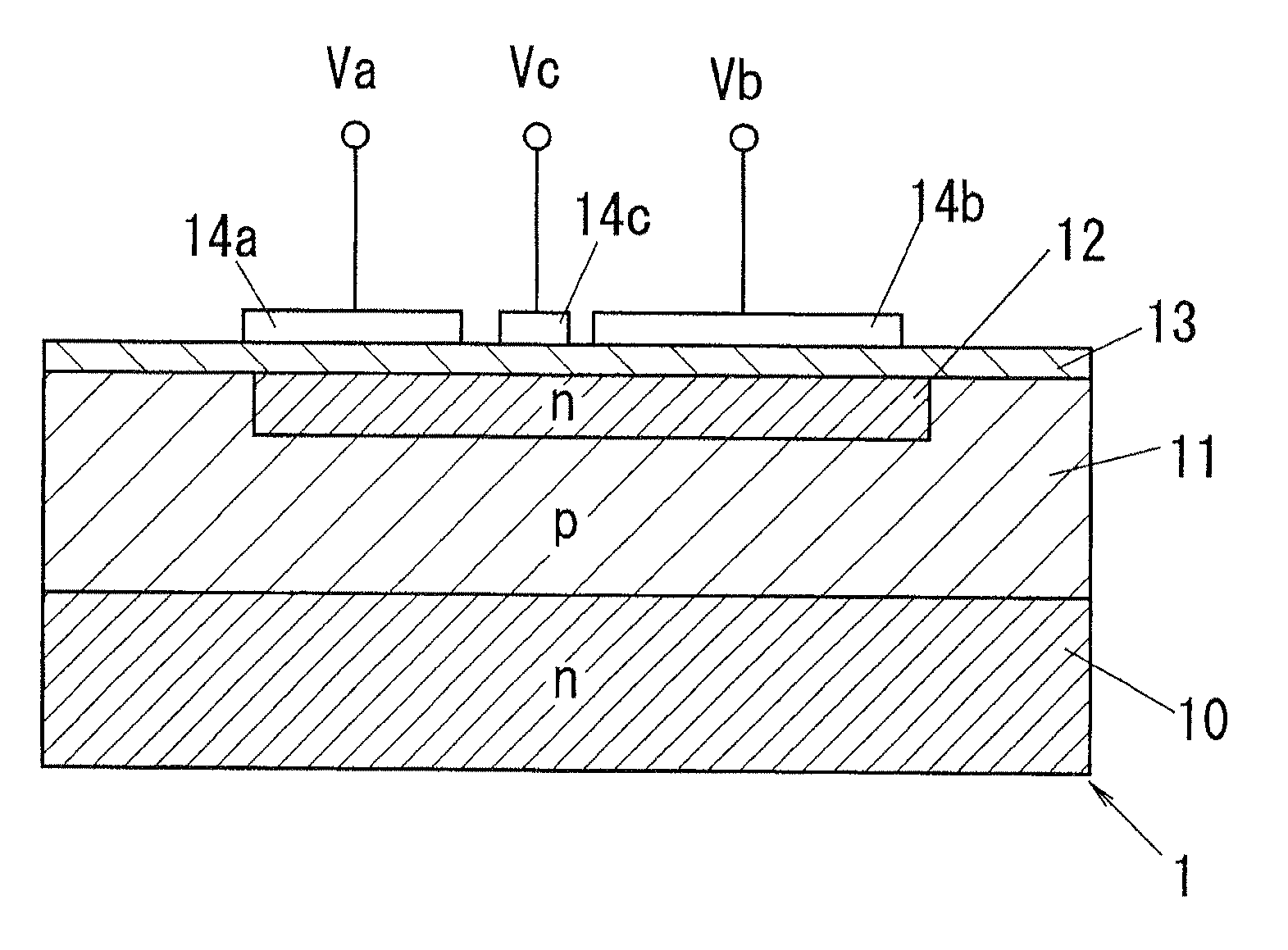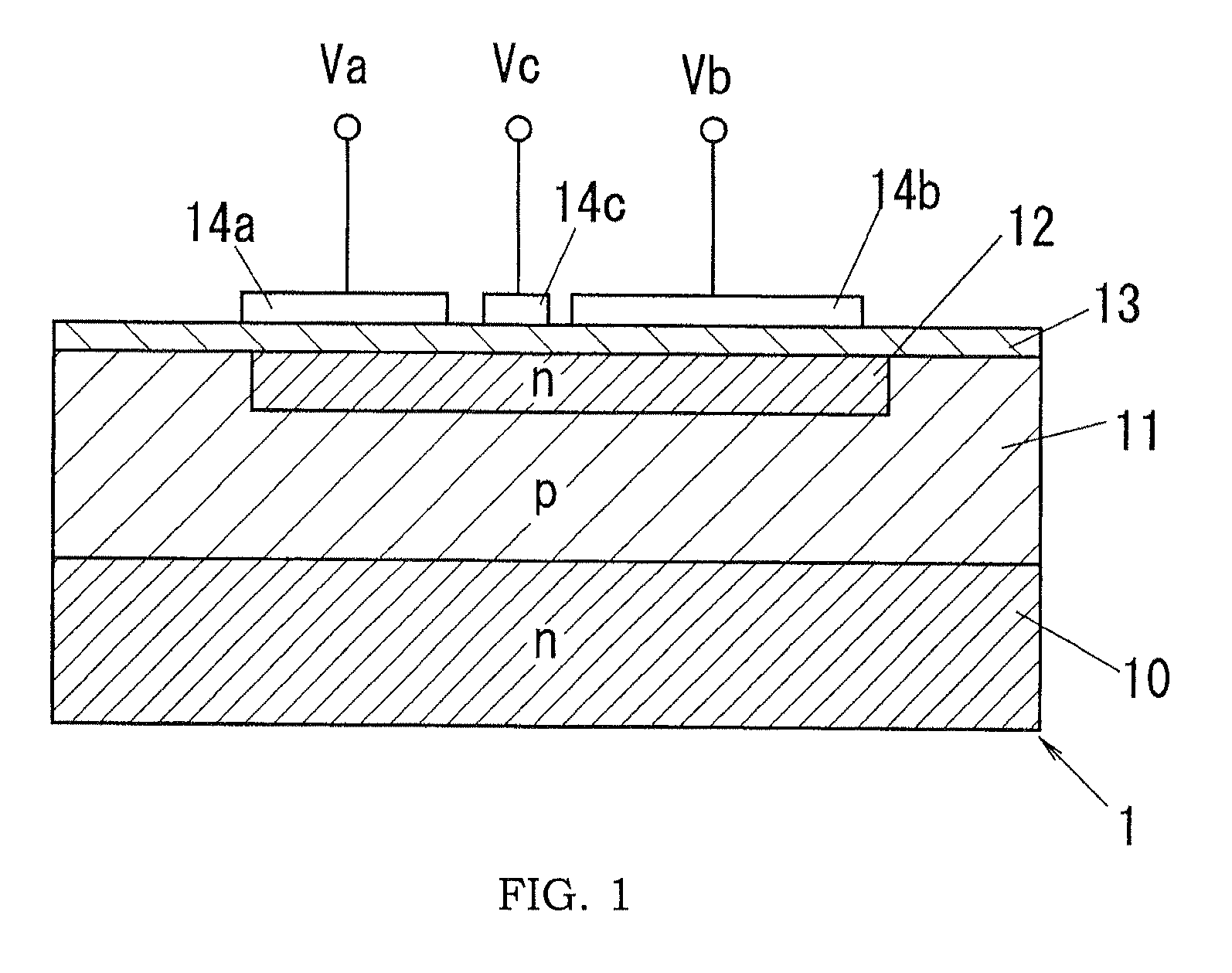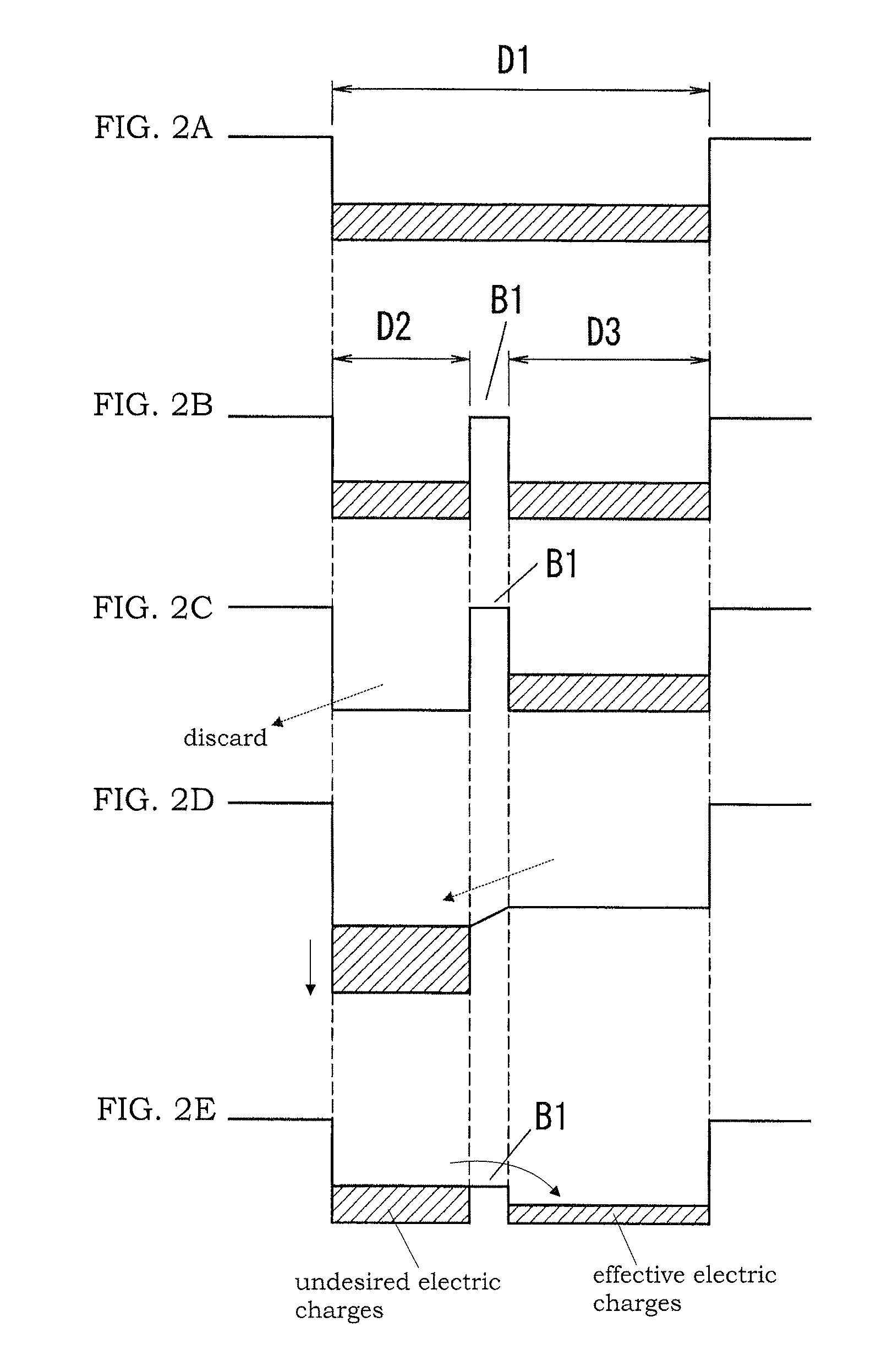Spatial information detecting device and photodetector suitable therefor
a technology of information detection and detection device, which is applied in the field of spatial information detection device and photodetector, can solve the problems of inability to downsize the photoelectric conversion portion for receiving the light from the target space to generate electric charges, information to be detected prior to the charge transfer channel, etc., and achieves the effect of preventing saturation phenomenon, high operation reliability, and downsizing the photoelectric conversion portion
- Summary
- Abstract
- Description
- Claims
- Application Information
AI Technical Summary
Benefits of technology
Problems solved by technology
Method used
Image
Examples
first embodiment
[0055]The spatial information detecting device of this embodiment comprises a light emission source configured to project a light intensity-modulated by a modulation signal as a signal light into a target space, a photodetecting portion configured to provide a received light output reflecting a fluctuation component of the signal light by separating a constant amount of a bias component from electric charges corresponding to a received light amount detected from the target space at a timing synchronized with the modulation signal, and a signal processing portion configured to detect the spatial information of the target space (e.g., a distance to an object in the target space) by use of the received light output. In the following embodiments, the photodetecting portion is provided by a photodetector. In addition, to avoid that the explanation of the present invention becomes complicated, only a minimum unit cell of the photodetector and its operation are explained in some situations...
second embodiment
[0134]The present embodiment is characterized by using the photodetector capable of automatically changing the amount of electrons separated as the undesired electric charges according to the received-light amount without using an external circuit for controlling the potential barrier B1.
[0135]That is, as a configuration for automatically adjusting the amount of the undesired electric charges, the photodetector 1 of the present embodiment has a holding well 15 formed on the general surface of a device formation layer 11 at a different position from the well 12, as shown in FIG. 9A. The holding well 15 has the same conductive type as the well 12, and a lower impurity concentration than the well 12. That is, the conductive type of the holding well 15 is n+. In addition, a holding electrode 14d is disposed at a position corresponding the holding well 15 to through an insulating layer 13, and a gate electrode 14e is disposed at a position corresponding to a region between the well 12 an...
third embodiment
[0158]In the present embodiment, as in the second embodiment, the charge holding portion D4 is formed, and the capacity of the charge separating portion D2 is automatically determined according to the received-light amount of the environmental light. The present embodiment is characterized by modulating the intensity of light projected from the light emission source in the lighting period by a modulation signal having a constant frequency, and taking out received-light outputs corresponding to received-light amounts, which are obtained at timings synchronized with two different phase zones of the modulation signal. In addition, a since wave is used as the waveform of the modulation signal to take out the received-light outputs, which respectively correspond to the received-light amount obtained in the phase zone of 0 to 180 degrees (hereinafter referred to as the phase zone “P0”) and the received-light amount of obtained in the phase zone of 180 to 360 degrees (hereinafter referred ...
PUM
 Login to View More
Login to View More Abstract
Description
Claims
Application Information
 Login to View More
Login to View More - R&D
- Intellectual Property
- Life Sciences
- Materials
- Tech Scout
- Unparalleled Data Quality
- Higher Quality Content
- 60% Fewer Hallucinations
Browse by: Latest US Patents, China's latest patents, Technical Efficacy Thesaurus, Application Domain, Technology Topic, Popular Technical Reports.
© 2025 PatSnap. All rights reserved.Legal|Privacy policy|Modern Slavery Act Transparency Statement|Sitemap|About US| Contact US: help@patsnap.com



